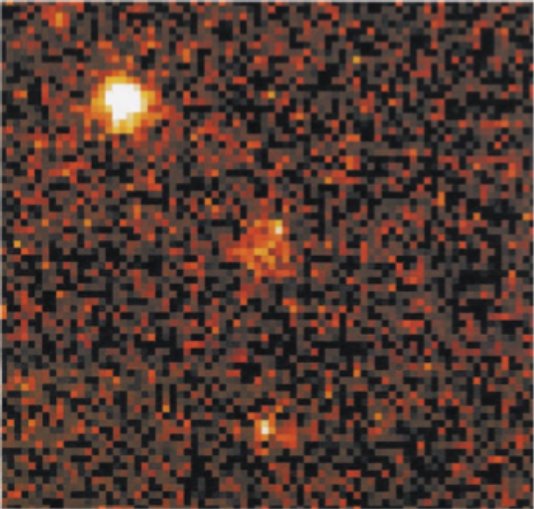
 Credit:
Dr. Andrew Fruchter, 1999, The Astrophysical Journal, Vol. 516, pg. 683
Credit:
Dr. Andrew Fruchter, 1999, The Astrophysical Journal, Vol. 516, pg. 683
The Grail's Host
Gamma Ray bursts have been mysterious events since their discovery in the late 1960's. One of the key goals of modern high energy astronomy was to determine the counterparts of GRBs, a goal which was finally achieved by the X-ray satellite BeppoSAX on February 28, 1997. The precise X-ray position of the burst afterglow that BeppoSAX provided enabled other astronomers to try to image the region of the burst in optical and other wavelengths. The image above is an HST image showing the optical afterglow of the GRB. Though this observation was obtained 6 months after the burst, the burst afterglow is still visible as a faint bright point at the upper right of the nebulous patch of light in the center of the image. This nebulous patch is actually a distant galaxy which is the host of GRB 970228. Subsequent GRB followups have lent credence to the idea that GRBs are extreme types of supernovae, and may mark the birth of black holes.
Last Week *
HEA Dictionary * Archive
* Search HEAPOW
* Education
Each week the HEASARC
brings you new, exciting and beautiful images from X-ray and Gamma ray
astronomy. Check back each week and be sure to check out the HEAPOW archive!
Page Author: Dr. Michael F. Corcoran
Last modified Tuesday, 27-Feb-2024 10:15:17 EST


